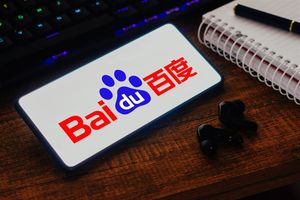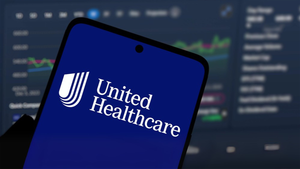The "Champagne Market Size, Share, Trends & Forecast 2025-2033" report has been added to ResearchAndMarkets.com's offering.
The Global Champagne Market was worth USD 7.72 billion in 2024 and is expected to reach USD 12.74 billion by 2033, growing at a CAGR of 5.72% during the forecast period. Drivers are increased luxury spending, premium gift trends, and surging demand for celebratory drinks in emerging markets, complemented by robust brand prestige and changing lifestyle patterns in Europe, North America, and Asia-Pacific.
Champagne is most linked with celebration, luxury, and occasions, usually found at weddings, New Year's parties, corporate parties, and upscale celebrations. It is also employed for formal toasts, fine dining gifting, and culinary pairing. It is supported by international promotion, distinctive branding, and strong cultural connections with triumph and prestige.
Though historically popular in Europe and North America, demand now is increasing in emerging markets in Asia and the Middle East. The market has also broadened with rose and vintage varieties, appealing to young consumers and wine aficionados. Champagne is still an ageless image of sophistication and so is a standard in premium beverage brands.
Growth Drivers in the Global Champagne Market
Increased Luxury Consumption and Gift Culture
Offshore wealth expansion, particularly in emerging markets, is fueling increasing penetration of luxury products - champagne being a strong status symbol. Traditions of gift-giving during celebrations, corporate events, and festivities often include high-end beverages. Champagne, due to its high price point and cultural connotations, is favored for gifting as well as the display of social status. As middle-class and upper-middle-class consumers in markets such as China, India, and the Middle East receive more discretionary income, champagne demand as a luxury product and gift continues to grow.
Growth of Premium and Vintage Products
Champagne producers are increasingly emphasizing prestige cuvees and vintage vintages to create standouts and appeal to wine enthusiasts. These premium products - longer-aged and often more costly - increase brand value and margins. Limited productions, higher-end blends, and exclusive vintage releases are sought after by collectors and high-end consumers. Wine tourism, tasting events, and gourmet food pairings also boost these offerings. With increased consumer sophistication around the world and the amplification of prestige factors by social media, sales of premium champagne keep getting stronger. In June 2024, Laurent-Perrier released Heritage, a multi-vintage blend. It is an intermediate product between the company's lowest-end non-vintage champagne and premium products. These developments entice new shoppers and drive repeat purchases among current patrons seeking new experiences.
Globalization and Digital Accessibility
Enhanced international logistics and e-commerce growth have brought champagne to consumers outside of classic markets. Supermarkets, wine stores, and websites throughout Asia, Latin America, and Africa stock diverse collections of champagne. Customers can explore, compare, and order high-end bottles conveniently. Digital marketing, partnerships with influencers, and online tastings have increased awareness away from France. As retail and delivery infrastructure evolves, adoption by consumers increases, even in areas that lack local wine heritage. Digital platforms are becoming major drivers for awareness and buying among new audiences. In 2022, Laurent-Perrier unveiled its collaboration with upmarket department store Selfridges to introduce an in-store and online customization service, providing Maison's first customized tin for the classic Cuvee Rose bottle.
Challenges for the Global Champagne Market
Strict AOC Regulations and Limited Production
Champagne is protected by law through Appellation d'Origine Controlee (AOC) regulations, limiting production areas and grape varieties. Although this guarantees quality, it also limits production quantities, restricting supply. When demand accelerates, producers cannot raise acreage or yield, limiting scale. This supply bottleneck raises prices, potentially pricing out price-sensitive consumers. In addition, altered climate trends increase the risk to consistent quality under stringent AOC regulations. Vintage differences can impact brand consistency, even as regulatory safeguards continue to be necessary to maintain the Champagne identity.
Competition from Alternative Sparkling Wines
Champagne is increasingly challenged by other, lower-priced sparkling wines from around the world, including Prosecco (Italy), Cava (Spain), and U.S., Australian, and English Methode Traditionnelle varieties. Each delivers a comparable experience at less expense and is often positioned as value luxury. For those who want celebratory beverages without the cost, the alternatives make sense. Champagne producers need to explain their price premium in terms of greater branding, distinctive provenance, and greater perceived value to stay competitive in widening global markets.
Global Economy Champagne Market
Economy or entry-level champagnes provide affordability without sacrificing AOC authenticity. They tend to be non-vintage blends used for everyday celebration, mixers, or restaurant dining. Lower in price, these bottles appeal to younger drinkers and newcomers to champagne. Such variants are commonly carried by supermarkets and discount stores, extending champagne's appeal to non-luxury buyers. As celebratory culture around the world grows larger, so does demand for affordable yet authentic champagne. Producers offset perception of quality with value through effective production methods. This segment facilitates volume sales and encourages new consumers to try the brand, with future moves up to premium tiers.
Global Luxury Champagne Market
Luxury champagne encompasses premium non-vintage and limited-edition bottles - lifestyle and status positioning. Products comprise gift sets, special packaging, and high-fashion collaborations. Usually retailed by high-end department stores, fine dining restaurants, and events, this segment is all about aesthetics and brand experience. Digital narratives, celebrity endorsements, and event marketing all take center stage. With evolving luxury consumption habits - particularly in China, Gulf nations, and Western high-end markets - luxury champagne becomes increasingly popular as a beacon of personal sophistication and social status.
Key Players Analysis: Overviews, Key Persons, Recent Developments, SWOT Analysis, Revenue Analysis
- Diageo plc
- La Marca USA
- F. Korbel & Bros.
- Cook's Champagne Cellars
- Champagne Taittinger CCVC
- Societe Jacques Bollinger SA
- Andre Champagne Cellars
- Laurent-Perrier Group
- Champagne AYALA
- LVMH Moet Hennessy
Key Attributes:
| Report Attribute | Details |
| No. of Pages | 200 |
| Forecast Period | 2024 - 2033 |
| Estimated Market Value (USD) in 2024 | $7.72 Billion |
| Forecasted Market Value (USD) by 2033 | $12.74 Billion |
| Compound Annual Growth Rate | 5.7% |
| Regions Covered | Global |
Key Topics Covered:
1. Introduction
2. Research & Methodology
2.1 Data Source
2.1.1 Primary Sources
2.1.2 Secondary Sources
2.2 Research Approach
2.2.1 Top-Down Approach
2.2.2 Bottom-Up Approach
2.3 Forecast Projection Methodology
3. Executive Summary
4. Market Dynamics
4.1 Growth Drivers
4.2 Challenges
5. Global Champagne Market
5.1 Historical Market Trends
5.2 Market Forecast
6. Market Share Analysis
6.1 By Product
6.2 By Price
6.3 By Distribution Channel
6.4 By Countries
7. Product
7.1 Prestige Cuvee
7.1.1 Market Analysis
7.1.2 Market Size & Forecast
7.2 Blanc De Noirs
7.3 Blanc De Blancs
7.4 Rose Champagne
7.5 Others
8. Price
8.1 Economy
8.1.1 Market Analysis
8.1.2 Market Size & Forecast
8.2 Mid-Range
8.3 Luxury
9. Distribution Channel
9.1 Supermarket and Hypermarket
9.1.1 Market Analysis
9.1.2 Market Size & Forecast
9.2 Specialty Stores
9.3 Online Stores
10. Countries
10.1 North America
10.1.1 United States
10.1.1.1 Market Analysis
10.1.1.2 Market Size & Forecast
10.1.2 Canada
10.2 Europe
10.2.1 France
10.2.2 Germany
10.2.3 Italy
10.2.4 Spain
10.2.5 United Kingdom
10.2.6 Belgium
10.2.7 Netherlands
10.2.8 Turkey
10.3 Asia Pacific
10.3.1 China
10.3.2 Japan
10.3.3 India
10.3.4 South Korea
10.3.5 Thailand
10.3.6 Malaysia
10.3.7 Indonesia
10.3.8 Australia
10.3.9 New Zealand
10.4 Latin America
10.4.1 Brazil
10.4.2 Mexico
10.4.3 Argentina
10.5 Middle East & Africa
10.5.1 Saudi Arabia
10.5.2 UAE
10.5.3 South Africa
11. Value Chain Analysis
12. Porter's Five Forces Analysis
12.1 Bargaining Power of Buyers
12.2 Bargaining Power of Suppliers
12.3 Degree of Competition
12.4 Threat of New Entrants
12.5 Threat of Substitutes
13. SWOT Analysis
13.1 Strength
13.2 Weakness
13.3 Opportunity
13.4 Threats
14. Pricing Benchmark Analysis
14.1 Diageo plc
14.2 La Marca USA
14.3 F. Korbel & Bros.
14.4 Cook's Champagne Cellars
14.5 Champagne Taittinger CCVC
14.6 Societe Jacques Bollinger SA
14.7 Andre Champagne Cellars
14.8 Laurent-Perrier Group
14.9 Champagne AYALA
14.10 LVMH Moet Hennessy
15. Key Players Analysis
For more information about this report visit https://www.researchandmarkets.com/r/hyuqu4
About ResearchAndMarkets.com
ResearchAndMarkets.com is the world's leading source for international market research reports and market data. We provide you with the latest data on international and regional markets, key industries, the top companies, new products and the latest trends.
View source version on businesswire.com: https://www.businesswire.com/news/home/20250815731252/en/
Contacts
ResearchAndMarkets.com
Laura Wood, Senior Press Manager
press@researchandmarkets.com
For E.S.T Office Hours Call 1-917-300-0470
For U.S./ CAN Toll Free Call 1-800-526-8630
For GMT Office Hours Call +353-1-416-8900






